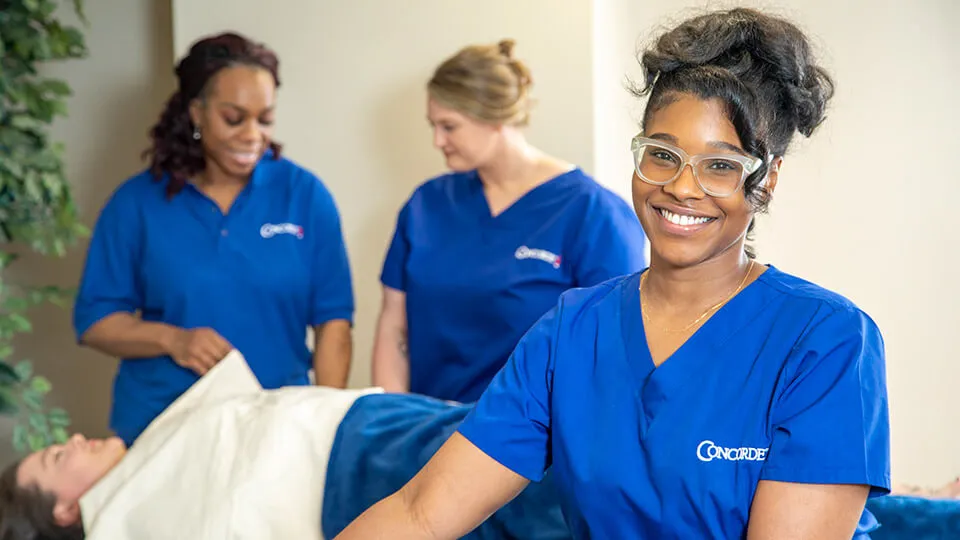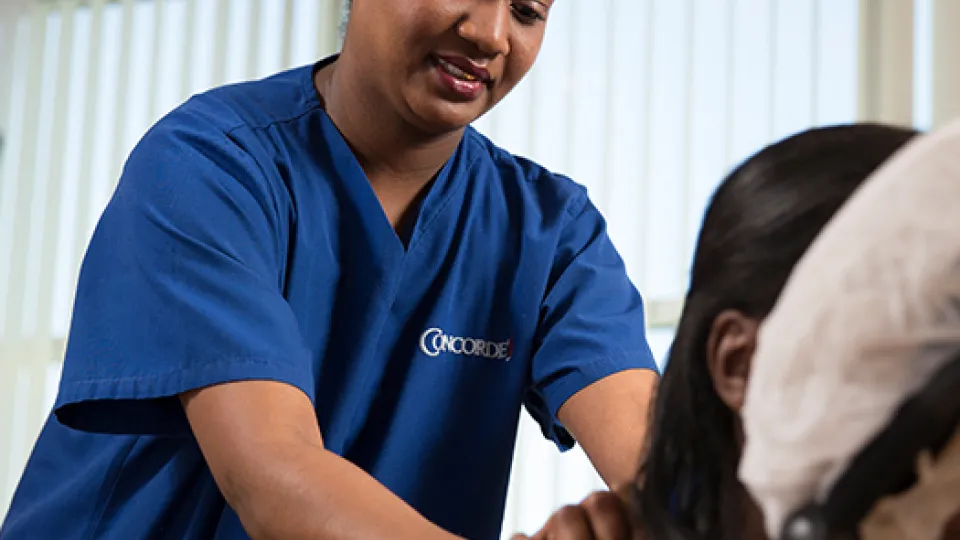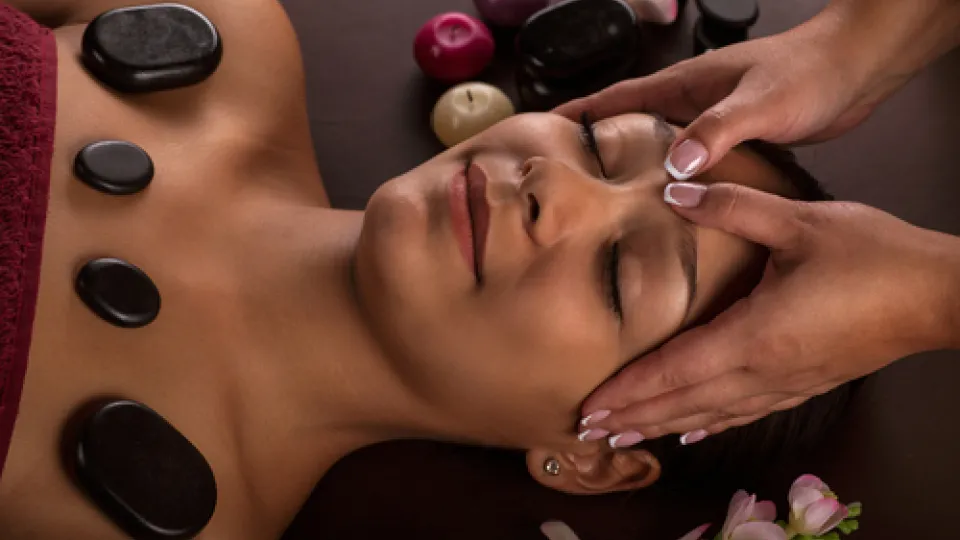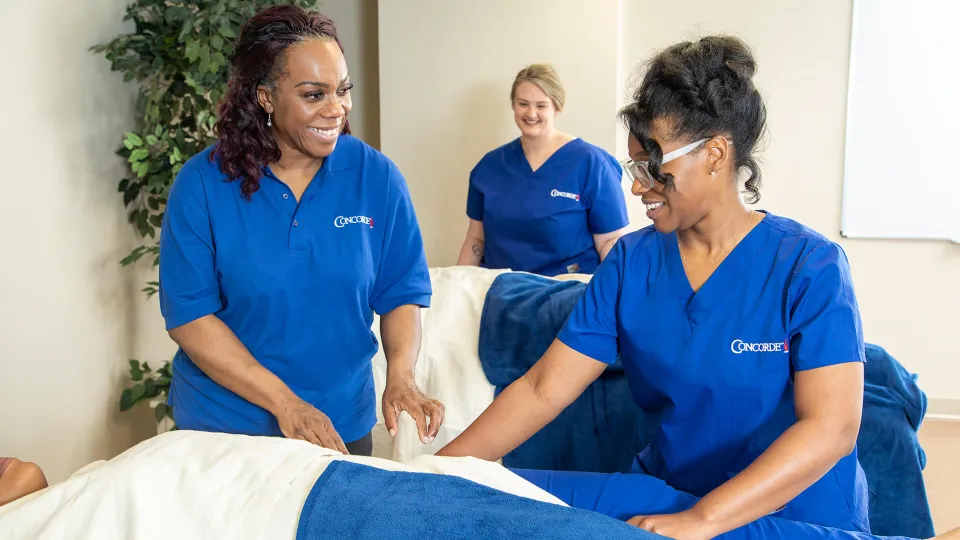
Massage therapy has significantly influenced cultures throughout the world and has led to the evolution of rich and varied traditions. There's more to the history of massage therapy than being a way to relax, as it has developed into an effective treatment for both mental and physical health and well-being. If you want to know how this diverse tradition started, review this guide to learn about the history of massage therapy and its influence on healthcare.
The History of Massage
There's some debate as to the culture that developed proper massage forms and techniques and how they first evolved, though many countries and cultures have played a part in the development of modern-day massage therapy. The practice has ancient roots that trace back thousands of years across different regions, including:
India 3,000 B.C.E.
Some of the earliest documented evidence of massage comes from India and dates to around 3,000 B.C.E. Therapeutic massage played a fundamental role in early India under the umbrella of Ayurvedic medicine, a system of holistic medicine and healing. The first written records of massage therapy in Ayurvedic range between 1,500 and 500 B.C.E., but research suggests the practice of these techniques many centuries before. Meditation, aromatherapy, and other techniques were evident for thousands of years in traditional Indian medicine.
China 2,700 B.C.E.
Chinese massage methods date to around 2,700 B.C.E. In ancient China, physicians used massage therapy in traditional Chinese medicine, believing health issues derived from energy imbalances in the body. They claimed massages had healing powers to make the body's energy flow and fight off disease and illness. Chinese practices developed into several holistic healing massages and body treatments that practitioners still use today, such as acupressure and acupuncture.
Egypt 2,500 B.C.E.
Hieroglyphics in Egyptian tomb paintings show massages occurring thousands of years ago. Around 2,500 B.C.E., the ancient Egyptians developed reflexology, a massage philosophy that's still popular today. The Egyptians believed in the interconnectedness of the body and that applying pressure to one area might treat another. They created hand and foot reflex massages as a way of treating the body as a whole.
Japan 1,000 B.C.E.
As Chinese massage techniques extended across Asia, Japanese Buddhist monks began to practice their styles after training in the Chinese methods. The monks practicing the Chinese method of Tui Na eventually developed it into Anma, the earliest form of Shiatsu massage. Shiatsu massage and Ashiatsu massage, which you can often find on many modern massage clinics' service lists, became popular methods of increasing blood flow and circulation throughout the body, in addition to relieving stress and promoting healing.
Greece 800-500 B.C.E.
As the influence of massage therapy spread into Europe, Greece also adopted the practice between 800 and 700 B.C.E. Ancient Greeks focused on physicality and athleticism, and they developed methods of relieving pressure and knots in muscles. This early form of sports massage allowed people to reverse some of the strains on their bodies from their active lifestyles.
During the fifth century B.C.E., Hippocrates was one of the first to develop the basis for modern medicine. He is familiar to many through the Hippocratic Oath, which physicians take to dedicate themselves to treating people to the best of their ability. Hippocrates prescribed massage treatments to promote the healing of injuries, which helped bring massage therapy traditions to widespread use in the Western world.
Interested In How To Become a Massage Therapist?
Click here to explore Massage Therapy Programs near you!
The History of Massage in Modern Times
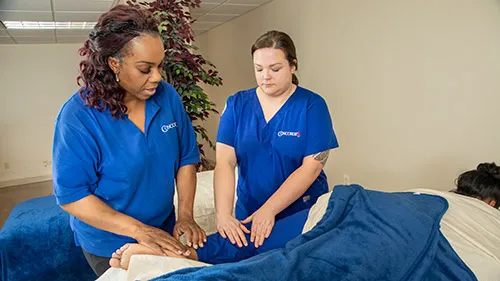
Read more about what makes a good massage therapist.
Western massage techniques showed little change from the fifth century B.C.E., while Grecian practices stayed the same until the early 1800s. Belief in the healing practice of massage and its early techniques grew throughout Europe following its development in ancient Greece and continued until modern times.
Evolution of Massage in the United States
Currently, massage services and businesses operate throughout the U.S.A., with the practice dating to the 1700s. One of the oldest medical practices is still one of the most popular and offers both mental and physical benefits. Though many of the tried-and-true cultural methods are still prevalent today, new science-based practices have become popular to alleviate a wider range of issues and symptoms. Whatever the modality, the world of massage therapy may provide relief and treatment options for patients struggling with various muscle and tissue conditions.
The Emergence of Swedish Massage
Swedish massage practitioners developed this method to treat gymnasts and other athletes using strokes, friction, kneading, and tapping movements on soft tissue to loosen tight muscles and relieve cramps while promoting healthy blood circulation and lymphatic drainage. This massage philosophy is most tied to modern scientific research of the body and its systems.
Currently, Swedish massage is often the favored technique for many massage therapists in the Western world. Its benefits include increased flexibility, an improved immune system, pain management, and mental relaxation. The whole-body health benefits of Swedish massage are perhaps why this healing practice has become so popular.
Types of Massage Therapy Styles
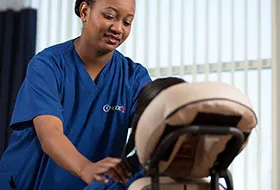
From its origins in ancient history to modern-day applications, there are many forms of massage therapy. Several of the most common healing methods include:
- Aromatherapy massage.
- Couple's massage.
- Deep-tissue massage.
- Hot stone massage.
- Myofascial release.
- Prenatal massage.
- Reflexology.
- Scalp massage.
- Shiatsu.
- Sports massage.
- Thai massage.
The Impact of Massage Therapy on Health and Medicine
The perception of massage being only available at high-end spas or health clubs has changed. People now widely recognize massage as a healing practice with multiple beneficial effects for mental and physical health. It has become more available to people from all walks of life and may provide therapeutic benefits and alternative treatment options for health professionals providing patient care.
Benefits of Massage
Massage therapy continues to show promise as a tool for therapeutic purposes and alternative medicine treatment for patients. Practitioners may use massage therapy to treat the following common conditions:
- Anxiety.
- Restlessness.
- Body aches.
- Sore muscles and joints.
- Sprains and strains.
- Nerve pain.
- Soft tissue damage.
- Sports injuries.
- Headaches and migraines.
- Digestive issues.
Several more beneficial effects of massage therapy on physical well-being may include:
- Better blood flow.
- Improved blood pressure.
- Improved sleep quality.
- Faster recovery time after exercising.
- Improved flexibility.
- Reduced pain and discomfort.
- Relief from swelling and inflammation.
- Reduced muscle stiffness.
- Improved immune system function.
Read more about the benefits of massage therapy.
Massage Therapy in HealthCare
Massage therapy may also benefit some medical conditions. For example, studies suggest that back massage may play a role in supporting healthier sleep patterns in patients with congestive heart failure. This could mean improved sleep and overall well-being for patients receiving treatment for this condition. In other studies, massage therapy may have a positive impact on pain reduction in patients undergoing cancer treatment.
How Do I Pursue a Career as a Massage Therapist?
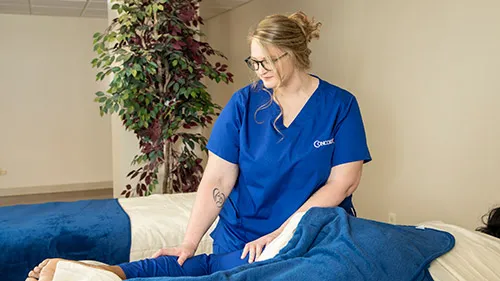
Education
Your first step is enrolling in a massage education program, such as the Massage Therapy Diploma Program at Concorde. Generally, these programs last between six and 12 months, depending on the school you choose to attend. At Concorde, our diploma program could take you as little as nine months to complete.
Interested In How To Become a Massage Therapist?
Click here to explore Massage Therapy Programs near you!
Experience Requirements
During and after your educational program, you may need to complete several practice hours before you can obtain professional certification. You may complete these practice hours at a student clinic, during an internship, or directly through your program. These requirements largely depend on the state where you live and seek certification.
Licenses and Certifications
In most cases, massage therapists obtain board certification, state licensing, and membership in a professional association, such as the American Massage Therapy Association (AMTA). In addition to completing an approved training program, you may earn certification through the National Certification Board for Therapeutic Massage and Bodywork (NCBTMB). You may also seek membership through the AMTA to further your commitment to the profession while availing yourself of continuing education and resources for renewing your certification.
If you want to train for a career as a massage therapist, explore what Concorde can do for you. You may complete our Massage Therapy Diploma Program in as little as nine months. Our program can provide you with the opportunity to obtain the knowledge and skills you need to succeed and prepare you for the Massage and Bodywork Licensing Exam (MBLEx). Train to start your healthcare career in months, not years, at Concorde.
Read more about the benefits of being a massage therapist.
"The History of Massage Therapy: 5,000 Years of Relaxation and Pain Relief," Florida Academy, https://florida-academy.edu/history-of-massage-therapy/
"Pages From History: Swedish Massage," Massage Magazine, https://www.massagemag.com/magazine-2002-issue100-history100-24026/
"Benefits of Massage Therapy," Mayo Clinic Health System, https://www.mayoclinichealthsystem.org/hometown-health/speaking-of-health/benefits-of-massage-therapy
"Effectiveness of Back Massage on Sleep Pattern Among Patients With Congestive Cardiac Failure," NIH National Library of Medicine/PubMed Central, https://www.ncbi.nlm.nih.gov/pmc/articles/PMC5637143/
"Meta-Analysis of Massage Therapy on Cancer Pain," NIH National Library of Medicine/PubMed Central, https://pubmed.ncbi.nlm.nih.gov/25784669/
Take The Next Step Towards a Brighter Future
Interested in learning more about our Massage Therapy program?
We have a Concorde representative ready to talk about what matters most to you. Get answers about start dates, curriculum, financial aid, scholarships and more!

